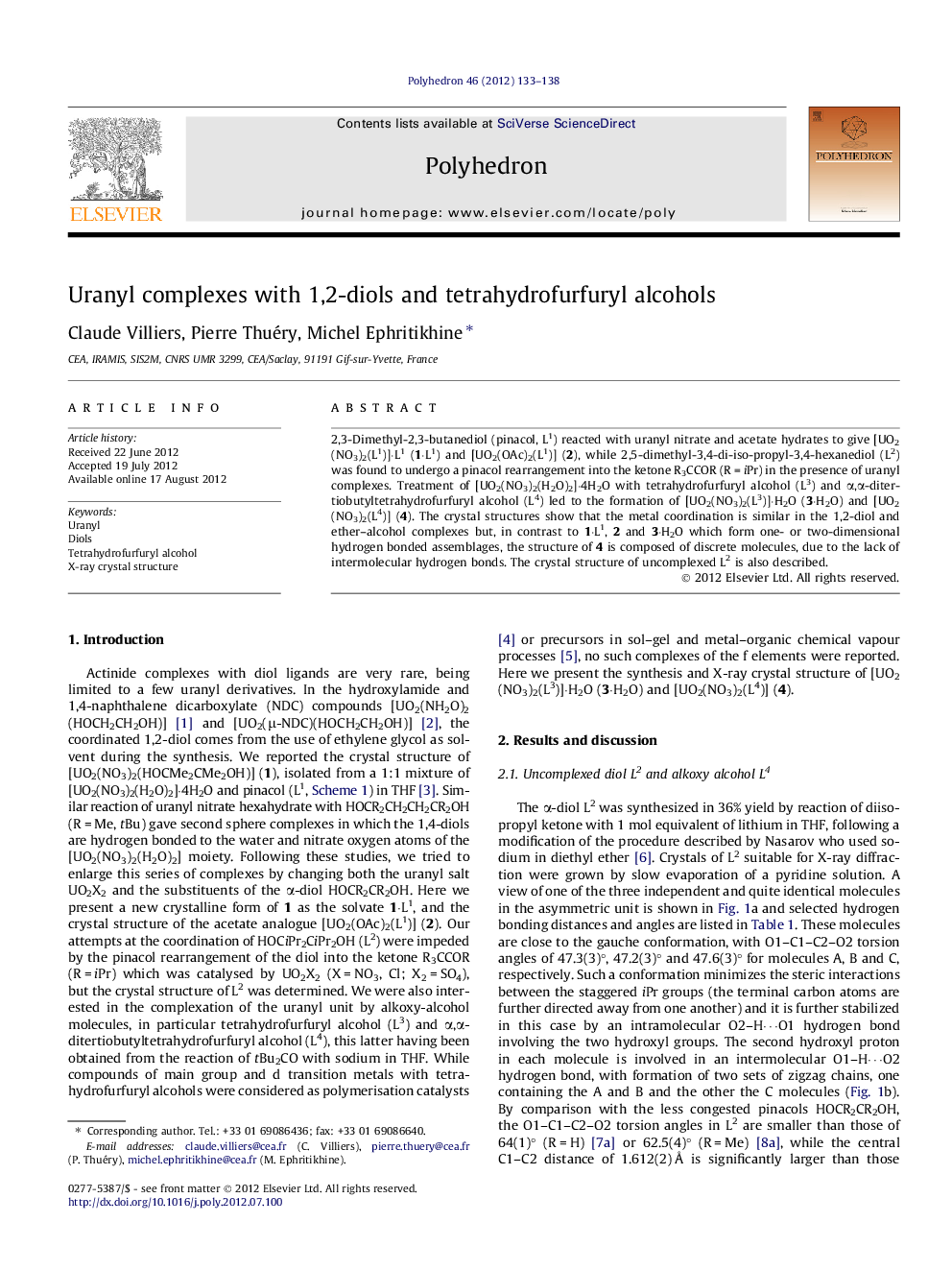| Article ID | Journal | Published Year | Pages | File Type |
|---|---|---|---|---|
| 1334711 | Polyhedron | 2012 | 6 Pages |
2,3-Dimethyl-2,3-butanediol (pinacol, L1) reacted with uranyl nitrate and acetate hydrates to give [UO2(NO3)2(L1)]·L1 (1·L1) and [UO2(OAc)2(L1)] (2), while 2,5-dimethyl-3,4-di-iso-propyl-3,4-hexanediol (L2) was found to undergo a pinacol rearrangement into the ketone R3CCOR (R = iPr) in the presence of uranyl complexes. Treatment of [UO2(NO3)2(H2O)2]·4H2O with tetrahydrofurfuryl alcohol (L3) and α,α-ditertiobutyltetrahydrofurfuryl alcohol (L4) led to the formation of [UO2(NO3)2(L3)]·H2O (3·H2O) and [UO2(NO3)2(L4)] (4). The crystal structures show that the metal coordination is similar in the 1,2-diol and ether–alcohol complexes but, in contrast to 1·L1, 2 and 3·H2O which form one- or two-dimensional hydrogen bonded assemblages, the structure of 4 is composed of discrete molecules, due to the lack of intermolecular hydrogen bonds. The crystal structure of uncomplexed L2 is also described.
Graphical abstractThe first complexes of an f element with tetrahydrofurfuryl alcohol ligands have been isolated. The uranyl ion coordination in these complexes is similar to that in the corresponding 1,2-diol compounds. Hydrogen bonding results in the formation of one- or two-dimensional assemblages in most cases.Figure optionsDownload full-size imageDownload as PowerPoint slide
